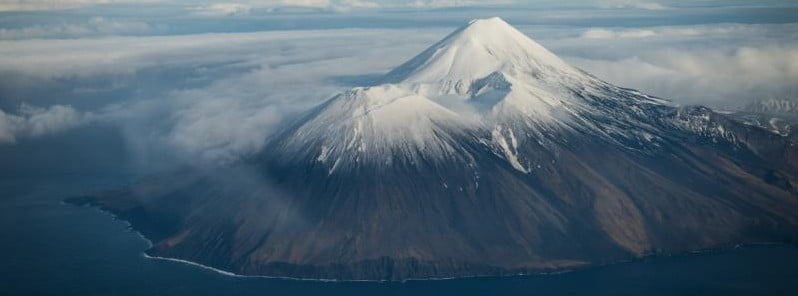Increased seismicity beneath Tanaga volcano, Alaska

In response to increased seismicity beneath the Tanaga volcano detected on March 6 and 7, 2023, the Alaska Volcano Observatory (AVO) raised the Aviation Color Code to Yellow and the Volcano Alert Level to Advisory.
The earthquake activity started slowly on March 6, 2023, at around 22:30 UTC, but escalated significantly on March 7, with earthquakes occurring as frequently as 2 or 3 each minute at around 06:45 UTC. The initial locations of these earthquakes indicate that they occurred at shallow depths beneath the summit of Tanaga, with the largest earthquakes having magnitudes ranging from 2 to 3.1
This volcano is located on Tanaga Island in the Andreanof Islands, which is approximately 100 km (62 miles) west of the community of Adak and 2 025 km (1 260 miles) SW of Anchorage. The island is home to the Tanaga volcanic complex, which comprises three main volcanic edifices. Tanaga Volcano is the tallest of these, standing at 1 806 m (5 925 feet) in the center of the complex.
The last reported eruption of Tanaga occurred in 1914, and earlier eruptions were reported in 1763 – 1770, 1791, and 1829. The eruptions produced blocky lava flows and occasional ash clouds, and occurred from both the summit vent and a 1 584 m (5 197 feet) high satellite vent on the volcano’s northeast flank.
The AVO monitors Tanaga Volcano using a local seismic and infrasound network, regional infrasound and lightning detection networks, and satellite data. The volcano is also being monitored for signs of unrest and possible eruption. The AVO has advised the public to stay informed and to be prepared in case of any further developments.
In addition to Tanaga Volcano, the Tanaga volcanic complex also includes Sajaka, a 1 354 m (4 443 feet)-high compound edifice immediately west of Tanaga volcano, and Takawangha, a 1 449 m (4 754 feet)-high summit to the east.
Recent fieldwork shows that recent eruptions have occurred in Sajaka and Takawangha, and it is possible that historic eruptions attributed only to Tanaga may instead have come from these other vents. Though no historical eruptions are known from Sajaka or Takawangha, parts of Takawangha’s edifice are hydrothermally altered and may be unstable, producing localized debris avalanches.
Geological summary
Tanaga volcano, the second largest volcanic center of the central Aleutians, is the central and highest of three youthful stratovolcanoes oriented along a roughly E-W line at the NW tip of Tanaga Island.
Ridges to the east and south represent the rim of an arcuate caldera formed by the collapse of an ancestral edifice during the Pleistocene.
Most Holocene eruptions originated from the Tanaga volcano itself, which consists of two large cones, the western of which is the highest, constructed within a caldera whose 400 m (1 312 feet) high rim is prominent to the SE.
At the westernmost end of the complex is conical Sajaka, a double cone that may be the youngest of the three volcanoes. Sajaka One volcano collapsed during the late Holocene, producing a debris avalanche that swept into the sea, after which the Sajaka Two cone was constructed within the collapse scarp.
This volcano is located within the Aleutian Islands, a UNESCO Biosphere Reserve property.2
References:
1 Tanaga Volcanic Activity Notice – USGS/AVO – March 7, 2023
2 Tanaga – Geological summary – GVP
Featured image: Tanaga volcano in November 2012. Credit: Roger Clifford, USGS/AVO

Commenting rules and guidelines
We value the thoughts and opinions of our readers and welcome healthy discussions on our website. In order to maintain a respectful and positive community, we ask that all commenters follow these rules.